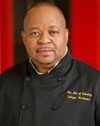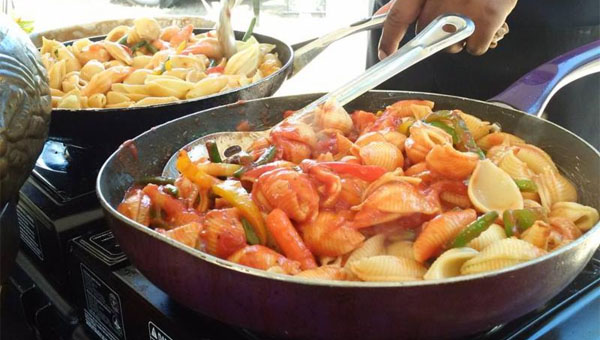By Chef Selwyn Richards
Culinary Specialist
 Have you ever had pasta that was too hard or just plain mushy? When you’re first learning to cook, you may have even prepared pasta that wasn’t the best. You may have wondered if there were a secret to cooking pasta and knowing when it’s cooked to perfection. The truth is, there is a secret, but it isn’t hard to learn.
Have you ever had pasta that was too hard or just plain mushy? When you’re first learning to cook, you may have even prepared pasta that wasn’t the best. You may have wondered if there were a secret to cooking pasta and knowing when it’s cooked to perfection. The truth is, there is a secret, but it isn’t hard to learn.
Do you know what “al dente” is? It is Italian for “to the tooth”, which is what perfectly-cooked pasta is called. But what exactly does it mean to have pasta cooked “al dente”, and how do you get it there?
Perfectly cooked pasta is to be cooked, just long enough, that it retains firm texture, but will still be flexible. Rather than being completely limp and squishy, you want your pasta to have a little “bite” to it, where it takes a little bit of effort to chew.
When cooking pasta, you may be tempted to turn your attention to other things. You really do want to pay attention to when the pasta begins to boil, and how long you allow it to boil. Rather than setting a timer and cooking the pasta, according to package directions, you’ll want to check the pasta a couple of minutes, before the directions say it should be finished.

Remember to prepare pasta the way you and your family enjoy it. Even if it isn’t textbook perfect, it will be perfect for your family.
Carefully take out one piece of pasta from the boiling water, let it cool long enough that you won’t burn yourself when you put it into your mouth; the pasta, if cooked properly, will be mildly chewy, and also won’t stick to your teeth.
If it does stick to your teeth or is too hard to chew, you’ll want to allow the pasta to cook for another minute. Again remove one piece of pasta and test it. Be careful not to allow the pasta to overcook. Generally you can reach “al dente”, within 7 to 10 minutes of boiling.
If you don’t like the taste of plain pasta, or are afraid you’ll burn yourself with the taste method, there are two other methods you can try. They aren’t quite as reliable as the taste method though.
You may have heard about flinging a piece of pasta against the wall to test for done-ness. While this may be possible, it isn’t a reliable method of testing pasta. Overdone pasta will stick to the wall in the same way. Besides that, you’ll then have to clean the pasta and leftover starch from the wall.
The other method for testing pasta is similar to tasting it. Remove a piece of pasta and cut it in half. Allow the pasta to cool enough that you don’t burn yourself. Pick up the pasta and look at it in good light, if you can see a definite ring around the center of the pasta, it isn’t fully cooked yet. You’ll want to allow it to cook for another minute. When the pasta is properly cooked, you will not be able to see a difference in how the pasta looks and the texture it has.
Of course, not everyone likes to eat pasta the same way. True Italians, for instance, never rinse pasta after it has cooked, but you may have been taught to do so.
You may like your pasta to be softer than “al dente”. Remember to prepare pasta the way you and your family enjoy it. Even if it isn’t textbook perfect, it will be perfect for your family.
Selwyn Richards is an award-winning master chef. He is also the President and Executive Chef at The Art of Catering Inc. and is the author of “The Art of Cooking: Soul of The Caribbean”. Chef Selwyn can be reached at: selwyn@theartofcatering.com or by phone — (905) 619-1059.
 Pride News Canada's Leader In African Canadian & Caribbean News, Views & Lifestyle
Pride News Canada's Leader In African Canadian & Caribbean News, Views & Lifestyle





